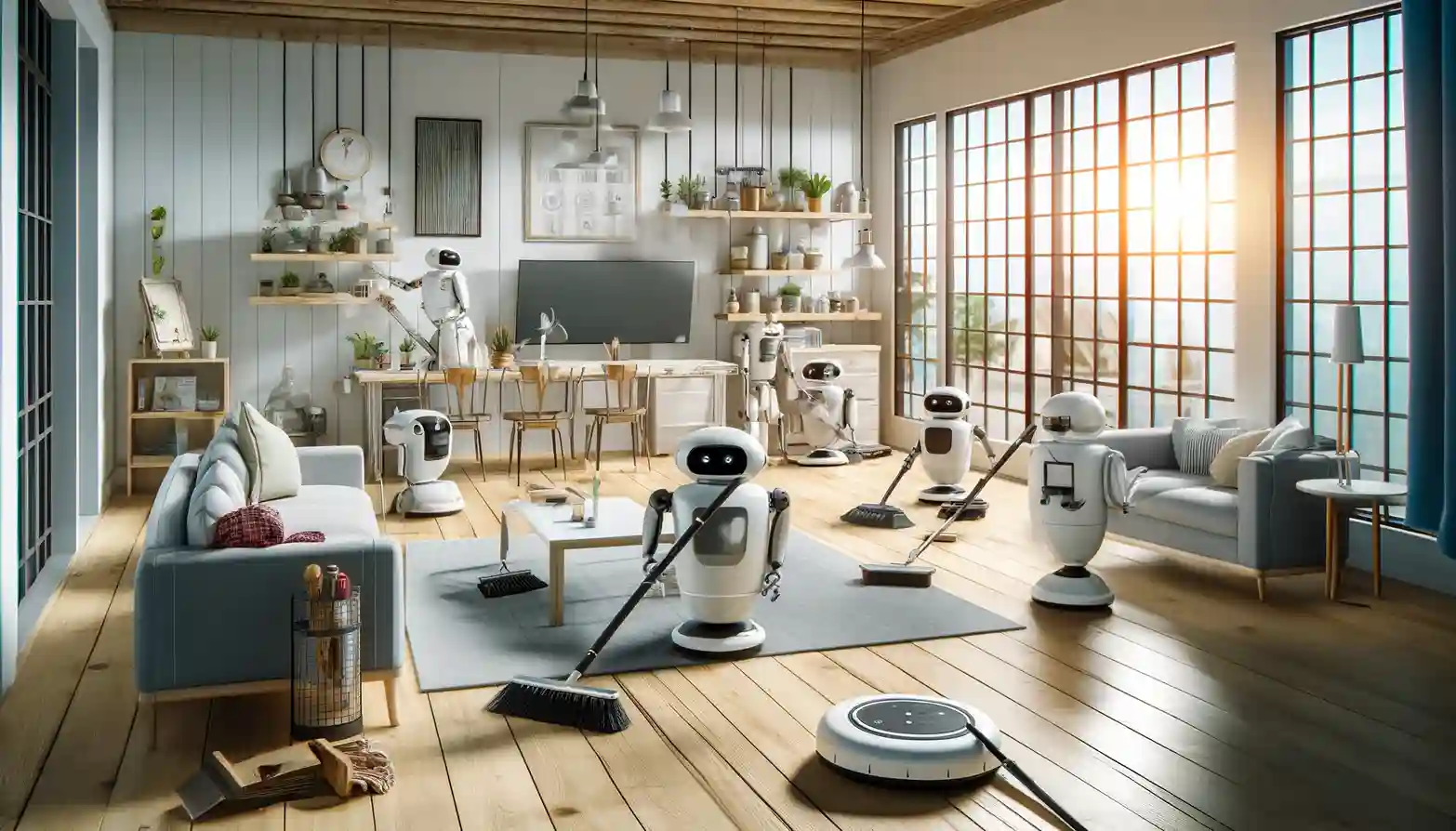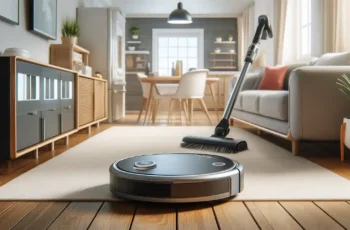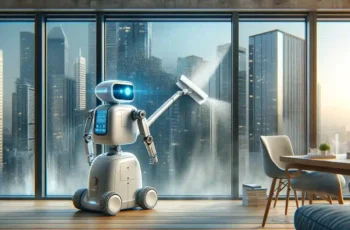The cleaning industry is undergoing a significant transformation, driven by the advent of robotics and artificial intelligence. Gone are the days of solely relying on manual labor for cleanliness; the new era belongs to robots efficient, tireless, and smart. This revolution is setting new benchmarks in commercial and residential cleaning, emphasizing sustainability, efficiency, and improved hygiene standards.

How Cleaning Robots Work?
Cleaning robots are marvels of modern engineering, functioning through a combination of sophisticated sensors, software algorithms, and mechanical components. At their core, they possess navigation systems often a blend of cameras, infrared sensors, and sometimes LIDAR technology that allow them to map their environment and move with precision. Many models are equipped with various types of brushes and suction mechanisms to handle different debris types and surfaces. These robots often include smart connectivity features that enable users to control and customize their cleaning through apps, voice commands, or integration into larger smart home systems. As they glide across floors or climb windows, they adjust their cleaning patterns in real-time, reacting to obstacles and dirt levels, and ensuring thorough coverage without human intervention. Behind the scenes, complex algorithms process sensor data to optimize cleaning routes and improve efficiency with every use, embodying the convergence of AI and practical robotics in everyday tasks.
Benefits of Cleaning Robots:
Experience a new level of cleanliness and convenience with these top-performing cleaning robots, each offering unique benefits to revolutionize your daily chores:
- Autonomy: These self-sufficient machines take charge of cleaning tasks, navigating spaces with little to no human guidance.
- Time-Saving: By automating routine clean-ups, they gift users extra hours for leisure or productivity.
- Consistent Cleanliness: Equipped with advanced algorithms, they maintain a high standard of cleanliness, session after session.
- Enhanced Safety: They negate the risks of cleaning in dangerous environments, keeping human operators out of harm’s way.
- Energy Efficient: Optimized for power usage, these robots consume less electricity, reflecting eco-conscious engineering.
- Accessibility: With their compact design, they reach under furniture and other tight spaces with ease.
- Smart Home Integration: Compatible with the latest smart home technologies, they can be controlled remotely for a hassle-free clean.
- Allergy Relief: Featuring high-efficiency filters, they significantly reduce household allergens for a fresher, healthier home environment.
Leading Cleaning Robots on the Market:
Meet the cutting-edge fleet of automated helpers each leading cleaning robot brings its own set of advanced features to tackle the daily dust and debris, simplifying household upkeep:
- iRobot Roomba s9+: This robot vacuum cleaner is at the forefront with its powerful deep-cleaning suction and PerfectEdge Technology for getting into corners and along edges.
- Ecovacs Deebot Ozmo T8 AIVI: Distinguished by its ability to simultaneously mop and vacuum, it uses advanced AIVI technology to identify and avoid obstacles effectively.
- Neato Botvac D7 Connected: With its unique D-shape design and LaserSmart mapping, it cleans corners more effectively than round robots and navigates with precision.
- Samsung POWERbot R7070: This powerful vacuum stands out with its intelligent power control and WiFi connectivity, offering a user-friendly, smart cleaning experience.
- Roborock S6 MaxV: Armed with twin cameras, this versatile robot avoids obstacles with ease and offers both mopping and vacuuming functions for a thorough clean.
- Dyson 360 Heurist: Known for its robust suction power and sophisticated 360-degree vision system, it learns and adapts to your home, cleaning meticulously.
- Shark IQ Robot Self-Empty XL RV1001AE: Features a self-emptying base, which collects debris for up to 30 days, and uses a methodical cleaning pattern for complete room coverage.
- Eufy RoboVac G30 Edge: Its smart dynamic navigation enhances cleaning efficiency, and it comes with boundary strips to ensure it cleans only the areas you want.
Comparative Analysis: Robots vs. Manual Cleaning: “Who Cleans Better?”
Comparative analysis between robots and manual cleaning methods shows a growing preference for automated solutions, with robots demonstrating superior effectiveness and consistency. According to insights from industry experts like Wessex Cleaning Equipment, robotic cleaners deliver precise, uniform results that outperform manual efforts, thanks to their unwavering performance and ability to work tirelessly without the physical limitations that humans face. This trend underscores a significant shift towards embracing technological advancements in cleaning protocols, where robots are increasingly favored for their efficiency, thoroughness, and ability to meet the high hygiene standards required in various professional environments.
Cost-Benefit Analysis of Robotic Cleaning: “Is It Worth Your Dime?”
The cost-benefit analysis of robotic cleaning delves into the financial implications of transitioning from traditional methods to automated solutions. Initially, the investment in robotic cleaning technology can seem substantial, encompassing not only the purchase price of the robots but also integration and maintenance expenses. However, when considering the long-term perspective, the narrative shifts significantly. Robotic cleaners offer substantial operational cost savings by reducing the need for manual labor, which can lead to a decrease in payroll expenses and associated costs like training and health insurance. Additionally, their ability to work around the clock without fatigue can dramatically increase productivity and ensure consistent cleaning standards. Over time, these factors can lead to significant financial savings, offsetting the upfront costs and proving the economic viability of robotic cleaning technologies. By enhancing efficiency and maintaining high cleanliness standards, robotic cleaners represent a prudent investment in the future of facility maintenance, promising not just cost savings but also improved operational workflow.
Conclusion
Robotic cleaners signify a paradigm shift in our approach to cleanliness, merging efficiency with technological advancement. Far from being a fleeting trend, they represent a steady march toward a future where automated cleaning is the norm, ensuring high standards of hygiene with minimal human effort. As the underlying technology continues to evolve, becoming more sophisticated and user-friendly, robotic cleaners are poised to become ubiquitous in our daily lives. This progression is leading us to a future where the laborious chore of cleaning is increasingly delegated to machines, freeing individuals and organizations to focus on more strategic, creative, or leisure activities. In this emerging landscape, robotic assistance in cleaning is not just about maintaining spaces but enhancing the quality of life and operational efficiency across various sectors.
FAQs:
Robots assist with cleaning by automating routine tasks, such as vacuuming, mopping, and window cleaning, reducing the need for manual labor. They can operate independently, navigate around obstacles, and reach areas that might be challenging or hazardous for humans, ensuring consistent cleanliness and hygiene.
Cleaning robots are highly effective for regular maintenance and routine cleaning tasks. They are designed to operate efficiently across various surfaces and environments, maintaining consistent performance levels. Their effectiveness is continually improving with advancements in sensor technology and machine learning, allowing for more thorough and adaptive cleaning processes.
While robots are increasingly capable of performing many cleaning tasks, they are unlikely to completely replace human cleaning services. Human oversight is still necessary for complex cleaning needs, quality control, and tasks requiring fine motor skills and judgment. However, robots can complement and reduce the workload of human cleaning services, leading to a collaborative working model.
AI is revolutionizing robotics by enhancing robots’ ability to learn from their environment, make data-driven decisions, and perform tasks more autonomously. In cleaning, AI enables robots to better understand space layouts, improve obstacle avoidance, and optimize cleaning paths. This intelligence allows robots to adapt to new challenges, improve efficiency over time, and deliver more personalized and effective cleaning solutions.


